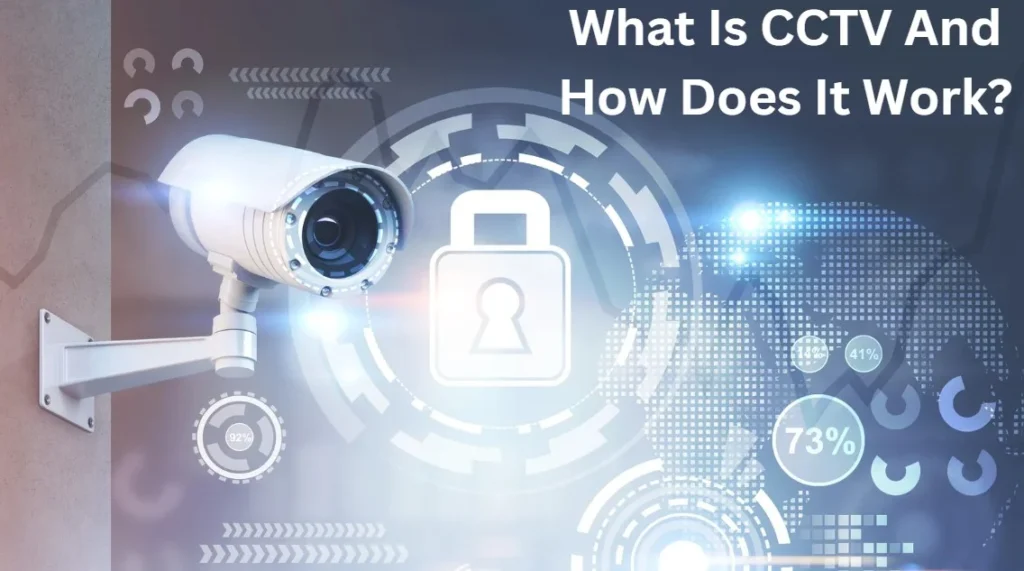In today’s world, security is more important than ever. This is where CCTV comes into play. But what is CCTV and how does it work?
Closed-circuit television, or CCTV, refers to a system that uses video cameras to transmit signals to a set of monitors.
Unlike traditional broadcasting, the signals are sent directly to specific locations, making it a private and secure option for surveillance. I use CCTV to monitor my property, deter crime, and gather evidence if needed.
The system typically consists of cameras, recording devices, and monitors, allowing me to keep an eye on various areas in real-time or review footage later.
Understanding how CCTV operates can greatly enhance personal and property security.
Key Components Of A CCTV System
A typical CCTV system consists of several essential components:
➤Cameras: The eyes of the system, capturing video footage. They can be analog or digital, varying in quality and features.
➤DVR/NVR: Digital Video Recorders (DVR) or Network Video Recorders (NVR) store the footage for later viewing. DVRs are commonly used with analog cameras, while NVRs are used with IP cameras.
➤Monitors: Screens where the live or recorded footage is displayed.
➤Cables and Connectors: These are necessary for connecting the cameras to the recording devices and monitors.
➤Power Supply: Cameras need power, which can be provided through traditional outlets or Power over Ethernet (PoE).
What Is CCTV And How Does It Work?
What is CCTV?
CCTV stands for Closed-Circuit Television. Unlike broadcast television, which transmits signals openly to anyone with a receiver, CCTV transmits its signals to specific monitors.
This technology is used primarily for surveillance purposes, enabling users to monitor activities in designated areas.
How Does CCTV Work?
1. Capture:
CCTV cameras capture video footage using sensors. The type of sensor determines the image quality; higher-quality sensors provide clearer images, especially in low-light conditions. Cameras can be fixed, pan-tilt-zoom (PTZ), or even thermal, depending on the specific needs of the surveillance.
2. Transmission:
Once footage is captured, it is transmitted to the recording device. This transmission can occur via:
- Wired Connections: Traditional coaxial or Ethernet cables (for IP cameras) provide reliable connectivity.
- Wireless Connections: Wi-Fi-enabled cameras transmit data wirelessly, offering more flexibility in installation.
3. Recording:
The video is then recorded by either a DVR or NVR. DVRs compress the video data, allowing for more extended storage durations, while NVRs handle data from IP cameras, often providing higher resolutions and more advanced features.
4. Viewing:
Users can view live feeds and recorded footage on monitors or remotely via mobile devices or computers. Many modern systems offer cloud storage options, enabling easy access to footage from anywhere with an internet connection.

Benefits Of Using CCTV
✔Enhanced Security: CCTV acts as a deterrent to potential criminals and allows for monitoring in real-time.
✔Evidence Collection: Recorded footage can serve as crucial evidence in legal matters or investigations.
✔Remote Monitoring: Modern systems allow users to access footage remotely, providing flexibility and control.
✔Improved Safety: In public places, CCTV can help monitor crowds and enhance overall safety.
Frequently Asked Questions About CCTV:
What is the difference between analog and IP CCTV cameras?
Analog cameras transmit video signals through coaxial cables, while IP cameras send data over a network, allowing for higher resolution and remote access.
Can I access my CCTV footage remotely?
Yes, many modern CCTV systems offer remote viewing options through apps or web browsers, letting you monitor your property from anywhere.
Do I need a permit to install CCTV cameras?
Permit requirements vary by location. It’s important to check local laws regarding surveillance cameras, especially if they are installed in public areas.
How do I choose the right CCTV system for my needs?
Consider factors like the size of the area to be monitored, the level of detail needed, and whether you want remote access. Evaluating these elements helps me select the most suitable system.
Conclusion
CCTV plays a vital role in enhancing security for both homes and businesses. By understanding what CCTV is and how it works, I can make informed decisions about my surveillance needs.
The technology not only helps deter crime but also provides valuable footage for safety and monitoring purposes.
Whether I’m watching live feeds or reviewing recorded videos, I feel more secure knowing that I have this reliable system in place.
As technology continues to evolve, I look forward to exploring new features that can further improve my security setup. Investing in CCTV truly offers peace of mind in today’s fast-paced world.
- How to Get Water Out of AirPods? Here’s Solution - November 21, 2024
- Are AirTags Worth It? – [Depends on You] - November 21, 2024
- How to Replace a Lost AirPod? - November 21, 2024
